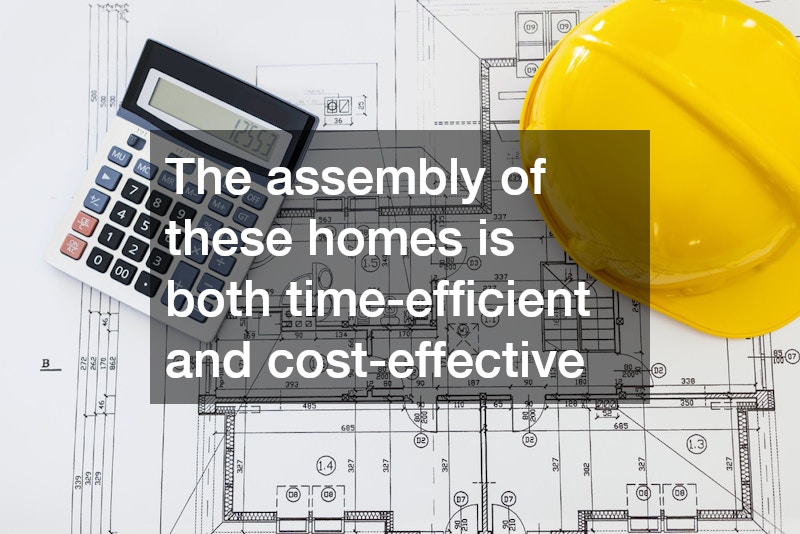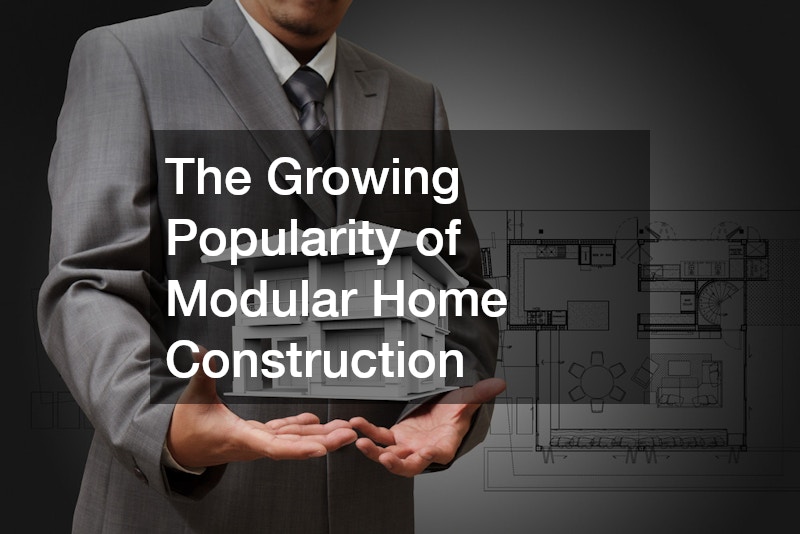In recent years, modular home construction has been gaining traction as a viable alternative to traditional home building. This article explores the factors contributing to the growing popularity of modular homes and answers common questions surrounding this innovative approach to residential construction.
What Are Modular Homes and How Are They Built?
Modular home construction, a relatively new trend in the housing market, involves prefabricated structures that offer a compelling alternative to conventional home construction. Each module of the home is built in a factory setting, which significantly enhances the efficiency and accuracy of the construction process.
Unlike traditional homes built entirely on-site, modular homes are assembled under controlled conditions, which minimizes the likelihood of weather-related delays and defects. Upon completion in the factory, these modules are transported to the permanent site, where they are pieced together like a puzzle, creating a cohesive and fully functional living space.
The construction process for modular homes is markedly different from traditional methods. In the factory, skilled workers use specialized tools and techniques to ensure each module conforms to exact specifications. This focus on detail enhances both the structural integrity and quality of the finished product. Furthermore, because the modules are built indoors, the materials are protected from environmental factors such as moisture, reducing the potential for mold and warping. The use of advanced technology in the factory setting also allows for high-quality inspections at every stage of production, ensuring that any issues are promptly identified and rectified long before the modules are assembled on-site.
The precise nature of modular construction results in numerous advantages, such as reduced construction waste and lowered overall building expenses. The assembly of these homes is both time-efficient and cost-effective, as it leverages economies of scale by producing several modules simultaneously. Given the streamlined production process, modular homes can take as little as three months to complete from start to finish, in stark contrast to the six to twelve months typically required for traditional homes. Customizations and transformations are easier, as homeowners can work directly with designers to achieve the exact layout and style they desire.
Why Are Modular Homes Gaining Popularity?
The growing popularity of modular homes can be attributed to multiple factors that resonate with contemporary homeowners. First and foremost is the cost-effectiveness of this construction approach. Traditional home-building can be fraught with unexpected costs and budget overruns, but modular homes offer more financial predictability. By manufacturing homes in a factory setting, manufacturers can better control expenses and pass the savings on to consumers. The streamlined construction process also translates into fewer labor costs, as the need for on-site labor is significantly reduced.
Environmental sustainability is another crucial factor driving the rise in demand for modular home construction. The factory-controlled setting results in less material waste during construction, as the precision of prefabrication minimizes excess scraps and the need for rework. Modular home manufacturers often incorporate eco-friendly practices by using sustainable materials, energy-efficient appliances, and water-saving fixtures. These attributes not only appeal to environmentally conscious buyers but also contribute to long-term savings in utility bills, making modular homes an attractive option for cost-savvy consumers.
Additionally, the significantly shortened construction timeline attracts buyers seeking quick completion of their new homes. Unlike traditional home construction, which can be easily delayed by adverse weather and other unforeseen complications, the majority of modular home-building occurs indoors, adhering to stricter schedules. Because the modules can be constructed and the site prepared simultaneously, overall timelines are condensed, reducing waiting periods for prospective homeowners.
What Are the Benefits and Drawbacks of Modular Home Construction?
Modular home construction offers numerous benefits, foremost among them is the assurance of consistent quality. As the modules are built in a factory environment, standardized procedures ensure uniform quality across each section of the house. Add to this the advantage of opting for precision-engineered components, and you’re looking at a home that can meet rigorous quality and safety standards. This degree of consistency and adherence to strict building codes makes modular homes an appealing addition to the housing market.
Despite these advantages, modular homes have their drawbacks. For instance, buyers may face limitations in terms of wider land selection, given that not all plots can easily accommodate transport and assembly of the large modules. Local zoning laws may also impose restrictions on where modular homes can be placed, adding an additional layer of complexity. Furthermore, while customization options are expanding, buyers may find that modular homes offer fewer design variations compared to completely custom-built homes, particularly when it comes to exterior aesthetics.
Another potential downside is the stigma occasionally associated with modular homes, which some perceive as inferior to traditional homes, despite evidence to the contrary. This misconception may affect resale value and restrict market appeal. However, as more communities become familiar with the high standards of modern modular construction, this stereotype is gradually dissipating.
As modular home construction continues to evolve, its popularity is poised to grow further. The consistent quality, cost-effectiveness, and sustainability of modular homes cater to modern homeowners’ needs, offering a compelling alternative to traditional housing solutions. While there are some drawbacks, such as limited plot availability and lingering stigmas, these are increasingly outweighed by the numerous benefits. As the industry innovates and consumer perceptions shift, modular homes are likely to become an integral part of the future housing landscape, providing practical, efficient, and environmentally friendly solutions for those seeking to enter the homeowner market.




